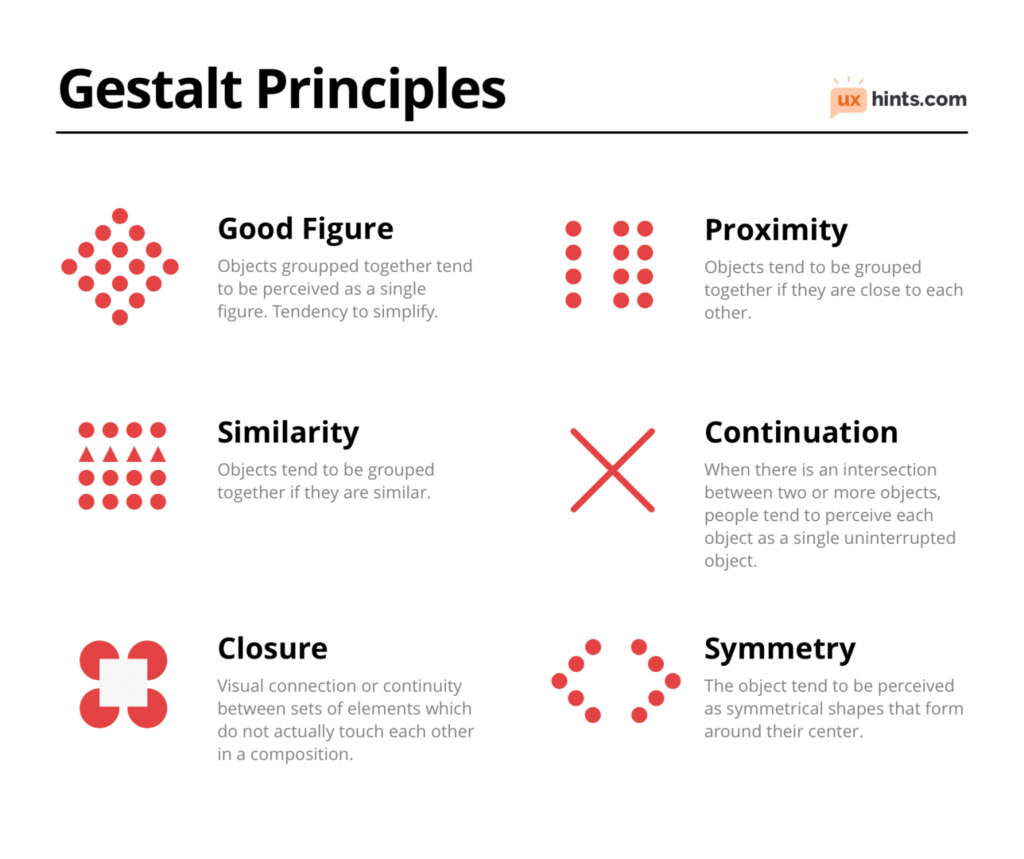What is it?
Gestalt psychology
A lot of people percieve that Gestalt psychology is psychological principles that were developed by a person named Gestalt. In fact, Gestalt is actually a german word which means ‘shape, figure or form’. Sometimes, it is also interpreted as ‘pattern’ or ‘configuration’.
One of the most famous Gestalt quote is that ‘the whole is greater than it’s parts’. However, some have mentioned that this statement has been misquoted and it is originally ‘the whole is other than the sum of it’s parts’. Gestalt psychology has been influential and monumental in many fields such as design such as the design of logos, websites and social media sites, architecture such as in creating depth and space and in social psychology.
The gestalt psychology school of thought looks at the human mind and behavior as a whole. The overarching assumption of Gestalt psychology is that when we try to make sense of the world around us, we do not simply focus on every small component. Instead, our minds tend to perceive objects as part of a greater whole and as elements of more complex systems. This school of psychology played a major role in the modern development of the study of human sensation and perception.
who are the founders?
the main founder of gestalt psychology is Max Wetheimer. But, he also attrIbuted fundamental research by Wolfgang Kohler and Kurt Koffka on their work on the movement of objects to Gestalt Psychology . Together, they formed the Gestalt School.
Gestalt Principles
In this topic, we will be focused on gestalt principles as these are closest to the teaching and learning of mathematics. Gestalt Principles are:
- Similarity – We tend to group similar items together
- Continuation – The law of continuity holds that points that are connected by straight or curving lines are seen in a way that follows the smoothest path.
- Closure – if something is missing in an otherwise complete figure, we will tend to add to it
- Proximity – The law of proximity suggests that objects near each other tend to be viewed as a group.
- Figure-ground – we seem to have an innate tendency to perceive one aspect of an event as the figure or fore-ground and the other as the ground or back-ground.
Image taken from: https://uxhints.com/visual-ui-design/gestalt-principles/
Strengths and weakness for mathematics teaching and learning
gestalt principles are actually applied in many mathematics topics especially in those that require visual perception such as in 3 dimensional shapes, geometry, and lines and angles and graphs. However, it’s application may be intrinsic which is usually in the process of drawing shapes and in complex problem solving that involves visualization. it is very rare to observe a mathematics class that applies the gestalt principles explicitly in the classroom.
Introducing gestalt principles into the math classroom can bring some benefits to students. One, is that it can allow students to observe how psychology is inherently involved in mathematics, specefically in those related to shapes and space. Another is that, it can allow students to observe how mathematics is applied in careers. In the future, students will use gestalt principles in architecture and advertising. In fact, in advertising, gestalt principles are central in the creative designs of company logos.
Example of teaching and learning mathematics incorporating gestalt principles
References:



